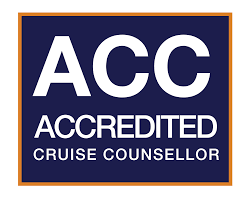Entry/Exit System (EES)
Important: The new program, called the Entry/Exit System (EES), is set to launch November 10, 2024. These are some key points below.
What You Need To Know:
The EES will register visa-free and visa-required travelers entering Europe for a short stay. No action will be required from travelers before they start their trip, as registration will be done at the external border of any of the 29 European countries using the system. Registration on the EES will be done every time travelers cross external borders and will replace the manual stamping of passports.
EES is a biometric system which will use digital photographs and fingerprints for registering travelers from non-EU countries, including the UK, when they cross the EU’s external border. It will apply to both short-stay visa holders and visa-exempt travelers, each time they cross the external borders of any of these European countries using the system.
- The system applies to those who are a non-EU national (means a traveler not holding the nationality of any European Union country or the nationality of Iceland, Liechtenstein, Norway or Switzerland.) and:
- need a short-stay visa to travel to the European countries using the EES (‘Short stay’ means up to 90 days within any 180-day period. This period is calculated as a single period for all the European countries using the EES)
- or
- do not need a visa to travel for a short stay in the European countries using the EES
- Entries and exits, or entry refusals will be electronically registered in the EES.
- In Cyprus and Ireland, despite being countries of the European Union, passports will still be stamped manually.
- The EES does not apply to: https://travel-europe.europa.eu/ees/whom-does-ees-not-apply_en
If you arrive at a border crossing point for the first time since the EES started
- You will have to provide your personal data. Passport control officers will scan your fingerprints or take a photo of your face. This information will be recorded in a digital file.
- Your passport (biometric or non-biometric) will not be stamped.
- This process can be quicker if you register some of your data in advance. You can do this by using:
- the dedicated equipment (“self-service system”), if available at your border crossing point; and/or
- a mobile application - if made available by the country of arrival or departure.
- In any of the instances above, you will meet a passport control officer.
Resources
- European Union New Requirements to Travel to Europe – There are tabs for both the Entry/Exit System (EES) and the ETIAS
- EES FAQs
- We Inspire Travel Blog- European Travel Information and Authorization System (ETIAS)
It is the client's responsibility to follow the set instructions and timelines.



